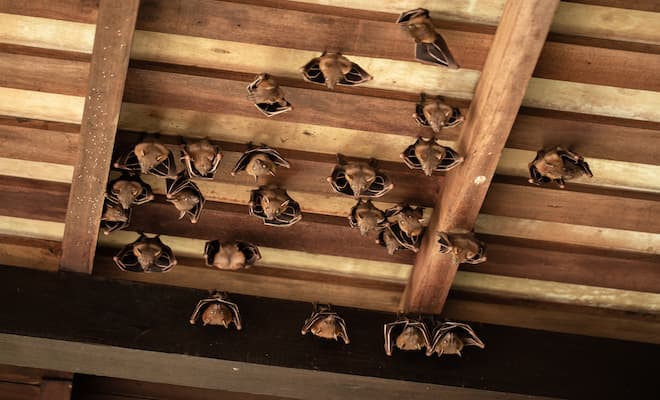It can happen to anyone and anywhere, especially to people who live near a forested area. Bats will often move in the attic through the gable. This may seem impossible to the average observer, but bats can squeeze through very narrow openings. Once the bat is inside, the bat broods for an extended period of time. It can happen that the bat will roost will an entire colony of bats with a number that can exceed 20 bats. According to Ontario law, bats cannot be even removed between June to August.
If you have a bat or bats in your attic, call Bat Control for expert consultation and quick and ethical bat removal services!
This is because they are a protected species under the Species at Risk Act under schedule 1. It is highly recommended and strongly encouraged to hire special bat removal specialists that have been trained, certified, and licensed to handle bat cases. To remove the bat is through physical action, but to let the bat escape on its own.
The bat will go in and out of the attic at specific times at the time. If the bat does this, you will need to install a bat cone and make sure the entry point is sealed off. These can be the gable itself or an opening around the fascia. The idea here is to make sure that the bat cannot enter anymore after the bat has left. Underneath, you will find information about two common bat species that are intrusive if you happen to catch a glimpse of them.
Big Brown Bat
The Big Brown Bat is a protected species in Ontario. They can be recognized by their golden-brown fur, black wings, their short snout, and their pointy long ears. They grow up to about 13cm in length. They eat a steady diet of mostly insects like mealworms, cockroaches, beetles, and flies. The Big Brown Bat is a nocturnal creature meaning that it is inactive during the day and active during the night.
One of the signs during nighttime can be rustles, screeches, and thumps indicating that they are active. The bats are often found in colonies and generally pose no threat. They hibernate during the colder months in the winter and give birth around spring. It is important to note that they cannot be removed from homes during specific times of the month.
Small Brown Bat
Just like its other counterpart, the Small Brown Bat is also a protected bat species in Ontario thus has certain limitations as to how and when to remove it. The Small Brown Bat can be recognized by its short snout golden brown-reddish fur, black wings, and pointy long ears just like the Big Brown Bat. Although very similar in appearance, the Small Brown Bat just as the name implies is smaller in size and can measure up to 9 cm in length. It is also nocturnal and survives on a diet of various insects as well.
Bats are a problem as well as a liability that can get you fined up to hundreds of dollars. For expert consultation and removal contact Bat Control!
